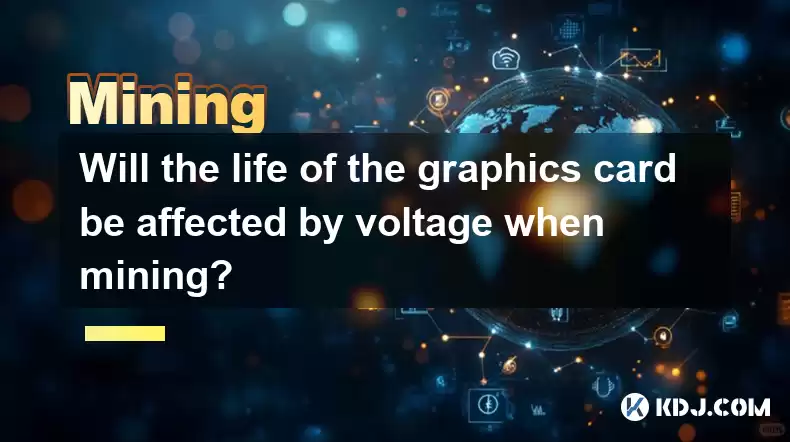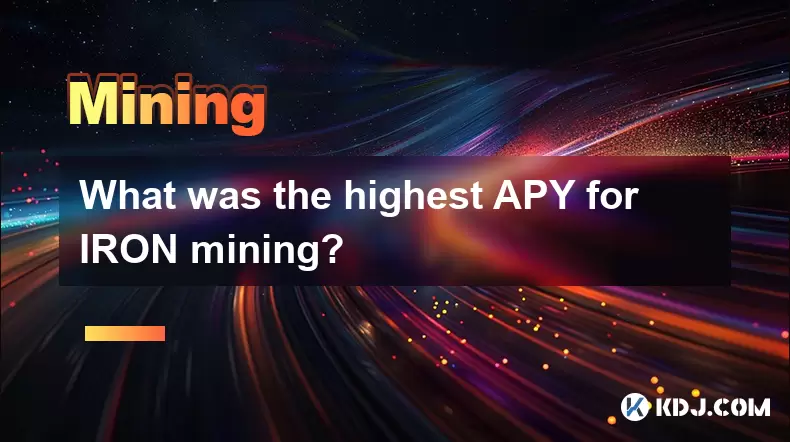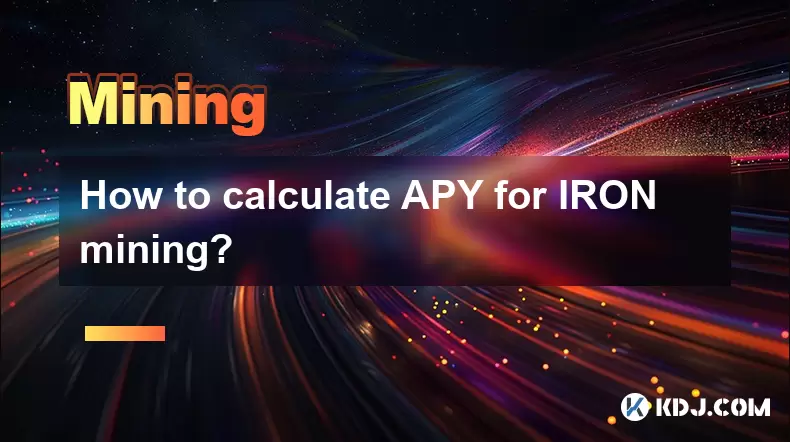-
 Bitcoin
Bitcoin $114200
0.00% -
 Ethereum
Ethereum $3637
0.56% -
 XRP
XRP $2.950
-2.01% -
 Tether USDt
Tether USDt $0.9999
0.02% -
 BNB
BNB $761.0
0.55% -
 Solana
Solana $164.1
-1.38% -
 USDC
USDC $0.9999
0.02% -
 TRON
TRON $0.3332
0.36% -
 Dogecoin
Dogecoin $0.2012
-0.52% -
 Cardano
Cardano $0.7261
-1.41% -
 Hyperliquid
Hyperliquid $37.62
-2.13% -
 Stellar
Stellar $0.3930
-2.65% -
 Sui
Sui $3.441
-0.16% -
 Bitcoin Cash
Bitcoin Cash $563.8
0.70% -
 Chainlink
Chainlink $16.50
0.09% -
 Hedera
Hedera $0.2424
-0.14% -
 Ethena USDe
Ethena USDe $1.001
0.01% -
 Avalanche
Avalanche $22.20
0.00% -
 Litecoin
Litecoin $118.0
-2.48% -
 UNUS SED LEO
UNUS SED LEO $8.991
0.12% -
 Toncoin
Toncoin $3.195
-3.87% -
 Shiba Inu
Shiba Inu $0.00001217
0.12% -
 Uniswap
Uniswap $9.674
-0.21% -
 Polkadot
Polkadot $3.633
1.00% -
 Monero
Monero $295.3
-0.82% -
 Dai
Dai $0.9999
0.00% -
 Bitget Token
Bitget Token $4.321
-0.41% -
 Cronos
Cronos $0.1392
0.73% -
 Pepe
Pepe $0.00001027
-0.89% -
 Aave
Aave $258.5
0.32%
Will the life of the graphics card be affected by voltage when mining?
Higher GPU voltage boosts cryptocurrency mining speed but significantly shortens lifespan due to increased heat and component wear. Optimal voltage settings and cooling are crucial for extending hardware life.
Mar 23, 2025 at 10:42 pm

Key Points:
- Mining cryptocurrency, particularly with GPUs, puts significant stress on the hardware.
- Voltage directly impacts the lifespan of a graphics card. Higher voltage generally leads to increased heat and wear, shortening lifespan.
- Proper voltage settings and cooling are crucial for extending the life of your GPU during mining.
- Understanding your GPU's specifications and limitations is paramount.
- Different cryptocurrencies have different mining requirements, affecting voltage needs.
Will the life of the graphics card be affected by voltage when mining?
Yes, the voltage applied to your graphics card significantly impacts its lifespan, especially during the demanding process of cryptocurrency mining. Higher voltages generally increase power consumption and generate more heat. This excessive heat accelerates the degradation of components within the GPU, ultimately shortening its operational life. The increased electrical stress also contributes to wear and tear on the internal circuitry.
Understanding the relationship between voltage, heat, and lifespan is crucial for miners. While higher voltages can potentially increase hashing power (and thus mining profitability), the trade-off is often a dramatically reduced lifespan. The goal is to find an optimal balance between performance and longevity.
The type of cryptocurrency being mined also influences the necessary voltage. Different algorithms require varying levels of computational power, directly affecting the GPU's voltage demands. For instance, mining Ethereum (using the Ethash algorithm) historically required higher voltages compared to other less demanding algorithms.
The manufacturing process of the graphics card also plays a role. Higher-end GPUs with robust cooling solutions and better component quality are generally more tolerant of higher voltages and heat. However, even the most durable cards will eventually suffer from prolonged exposure to excessive voltage and temperature.
Monitoring your GPU's temperature and voltage is critical during mining. Specialized software allows you to track these metrics in real-time. Maintaining optimal temperatures through proper cooling (e.g., using efficient fans, water cooling, or undervolting) is crucial for extending the lifespan of your hardware.
Undervolting, a technique that involves reducing the voltage supplied to the GPU, can be a powerful tool to extend its lifespan. While it may slightly reduce hashing power, the increase in longevity and reduced heat generation often outweigh this minor performance decrease. It's essential to research the safe undervolting limits for your specific GPU model to avoid instability.
Overclocking, the opposite of undervolting, increases the voltage and clock speeds, potentially boosting mining performance. However, overclocking significantly increases the risk of hardware damage due to excessive heat and stress. It's generally not recommended unless you have a deep understanding of your GPU's capabilities and are prepared for potential risks.
Different manufacturers have varying recommendations for safe voltage ranges for their GPUs. Consulting your GPU's specifications and manufacturer's guidelines is essential before adjusting voltage settings. Exceeding these limits can void warranties and potentially damage your hardware irreparably.
The quality of the power supply unit (PSU) also plays a vital role. An insufficient or unstable PSU can deliver erratic voltage, leading to instability and potentially damaging your GPU. Ensuring you have a high-quality PSU with sufficient wattage is crucial for stable and safe mining operations.
The ambient temperature of your mining environment also significantly impacts your GPU's operating temperature. A hot environment will necessitate more aggressive cooling strategies to prevent overheating, even with lower voltages. Maintaining a cool environment can significantly contribute to extending the lifespan of your GPU.
Regular cleaning of your GPU's fans and heatsink is vital to ensure optimal cooling. Dust buildup can significantly reduce cooling efficiency, leading to higher temperatures and increased stress on the components. This maintenance should be performed regularly, especially in dusty environments.
The use of specialized mining software often includes features to monitor and control voltage and fan speeds. These features can help you fine-tune your mining setup to balance performance and longevity. Understanding these tools is key to maximizing your mining efficiency while protecting your hardware.
Choosing a reputable graphics card vendor is also important. High-quality GPUs from established manufacturers tend to have better component quality and thermal designs, making them more resilient to the stresses of mining.
Finally, consider the overall cost-benefit analysis. The increased profitability from higher voltage mining might be offset by the shorter lifespan and potential for premature failure, leading to higher replacement costs in the long run.
Frequently Asked Questions:
Q: Can I use any GPU for mining? A: While many GPUs can be used for mining, some are more efficient and better suited than others. Consider the algorithm used for the cryptocurrency you wish to mine, as different GPUs perform better on different algorithms.
Q: How do I monitor my GPU's voltage and temperature during mining? A: Dedicated mining software and monitoring tools (like MSI Afterburner or HWMonitor) allow you to track these vital metrics in real-time.
Q: What happens if I apply too much voltage to my GPU? A: Applying excessive voltage can lead to overheating, instability, and ultimately, permanent damage to your GPU.
Q: Is undervolting always beneficial? A: While undervolting generally extends lifespan and reduces heat, it may slightly decrease hashing power. Finding the optimal balance depends on your priorities.
Q: How often should I clean my GPU during mining? A: Regular cleaning, at least every few months, is recommended to remove dust and maintain optimal cooling. More frequent cleaning may be necessary in dusty environments.
Disclaimer:info@kdj.com
The information provided is not trading advice. kdj.com does not assume any responsibility for any investments made based on the information provided in this article. Cryptocurrencies are highly volatile and it is highly recommended that you invest with caution after thorough research!
If you believe that the content used on this website infringes your copyright, please contact us immediately (info@kdj.com) and we will delete it promptly.
- Fast-Moving Cryptos: Could Pudgy Penguins Deliver High Gains by 2025?
- 2025-08-06 16:30:11
- Crypto Gaming Tokens: August 2025 Investment Opportunities
- 2025-08-06 16:50:12
- Flipster, Kaia, and Stablecoin Access: Bridging Crypto to Everyday Life in Asia
- 2025-08-06 16:50:12
- Superp ($SUP) Takes Flight on Binance Alpha: A New Era for On-Chain Perpetual Trading
- 2025-08-06 16:30:11
- Indonesia's Crypto Tax Tightrope: Balancing Revenue and Bitcoin Adoption
- 2025-08-06 17:10:12
- Nissan Magnite Kuro: India's Black Edition Steals the Show
- 2025-08-06 16:56:02
Related knowledge

What was the highest APY for IRON mining?
Jul 23,2025 at 05:14am
Understanding IRON Token and Its Mining MechanismThe IRON token is a stablecoin that operates within the Iron Finance ecosystem, primarily on blockcha...

What is impermanent loss in IRON pools?
Jul 23,2025 at 09:00am
Understanding Impermanent Loss in the Context of IRON PoolsImpermanent loss is a phenomenon that affects liquidity providers in decentralized finance ...

How to claim rewards from IRON mining?
Jul 23,2025 at 02:21pm
Understanding IRON Mining and Reward MechanismsIRON Finance operated as a decentralized finance (DeFi) protocol on the Polygon and Binance Smart Chain...

How to claim rewards from IRON mining?
Jul 29,2025 at 05:07am
Understanding IRON Mining and Reward MechanismIRON is a dual-token system designed to stabilize the value of a synthetic asset through a combination o...

IRON mining tutorial for beginners
Jul 27,2025 at 12:01am
What Is IRON and How Does It Work in the Cryptocurrency Ecosystem?IRON is a cryptocurrency token that operates on the Binance Smart Chain (BSC) and is...

How to calculate APY for IRON mining?
Jul 28,2025 at 09:49am
Understanding APY in the Context of IRON Token MiningWhen engaging in IRON token mining within decentralized finance (DeFi) platforms, Annual Percenta...

What was the highest APY for IRON mining?
Jul 23,2025 at 05:14am
Understanding IRON Token and Its Mining MechanismThe IRON token is a stablecoin that operates within the Iron Finance ecosystem, primarily on blockcha...

What is impermanent loss in IRON pools?
Jul 23,2025 at 09:00am
Understanding Impermanent Loss in the Context of IRON PoolsImpermanent loss is a phenomenon that affects liquidity providers in decentralized finance ...

How to claim rewards from IRON mining?
Jul 23,2025 at 02:21pm
Understanding IRON Mining and Reward MechanismsIRON Finance operated as a decentralized finance (DeFi) protocol on the Polygon and Binance Smart Chain...

How to claim rewards from IRON mining?
Jul 29,2025 at 05:07am
Understanding IRON Mining and Reward MechanismIRON is a dual-token system designed to stabilize the value of a synthetic asset through a combination o...

IRON mining tutorial for beginners
Jul 27,2025 at 12:01am
What Is IRON and How Does It Work in the Cryptocurrency Ecosystem?IRON is a cryptocurrency token that operates on the Binance Smart Chain (BSC) and is...

How to calculate APY for IRON mining?
Jul 28,2025 at 09:49am
Understanding APY in the Context of IRON Token MiningWhen engaging in IRON token mining within decentralized finance (DeFi) platforms, Annual Percenta...
See all articles

























































































